Visit to “Goryokaku”
This is the third article of the visit to Saku City, Nagano prefecture.
After seeing Osawa Elementary School, I went to Goryokaku. It is Tatsuoka Castle in Saku City. Along with Goryokaku in Hakodate, it is a Western-style castle with a star-shaped bastion that has only two in Japan.
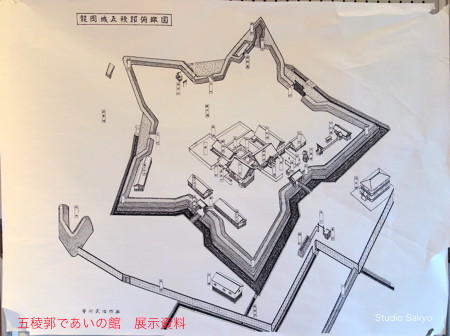
This image was taken from the exhibition materials of “Goryokaku Deai no Yakata", which is right next to Tatsuoka Castle.
Tatsuoka Castle was built by Norikata Matsudaira, the feudal lord of the Okutono Domain in Mikawa. (Later he renamed to Yuzuru Ogyu.)
In 1863, most of the domain’s territory were in Shinano, so Norikata requested that the territory be relocated to Shinano, and also applied for permission to build the new “Jinya Goryokaku". The construction started in 1864, and the palace and other facilities were “completed" in the castle in 1867.
Although it was said “completed", in reality there were many parts where roof tiles were not stretched, and it seems that it was in an unfinished state.
Norikata became an army magistrate in 1865, then “wakadoshiyori" (junior counsel), next year become “roju" (the Shogun’s Council of Elders). Perhaps he couldn’t spend time and money on building the castle.
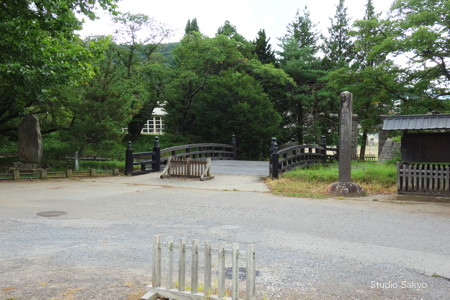
Crossing the “Ote Bridge" (main bridge) in front of me and enter “Castle".
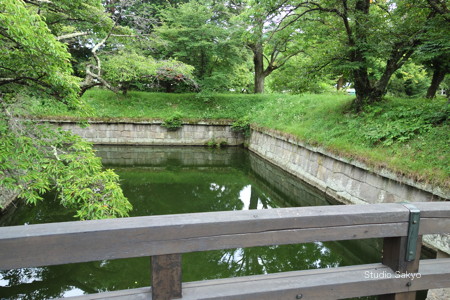
The moat of the castle seen from the top of the bridge.
The width of the moat is the widest in the vicinity of Ote Bridge, which is 9.1m, but the other parts are a little narrow, about 7.3m on average. However, the entire circumference of the moat is not completed. The part about 200m that surrounds two of the five bastions was unfinished.
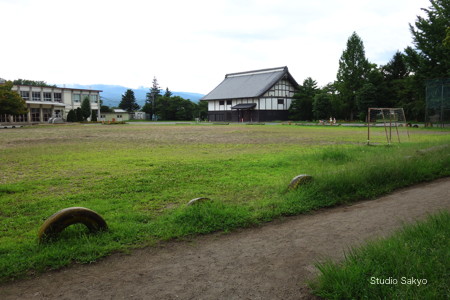
The inside of the bastion looks like this.
Currently, Goryokaku is the site of Taguchi Elementary School in Saku City.
It’s summer vacation so it’s quiet.
After the Meiji Restoration, in 1871, along with the abolition of the feudal clan, the Ministry of War proclaimed the demolition of castles nationwide. In Tatsuoka Castle, the estate and stone wall were left as they were. But the earthworks were gradually scraped and the moat was reclaimed over a dozen years, and the buildings were sold off. The Shoin, East Gate, and Yakui Gate were still remain in several places in Saku City. Only the “Odaidokoro" (kitchen of the palace) (the central building in the photo above) was left on the Goryokaku site. (*)
With the promulgation of the school system in 1873, “Shoyu School" opened in Tanokuchi Village at a nearby Banshoin Temple. This Shoyu school moved to the site of Tatsuoka Castle in 1875, two years later. Shoyu School was later renamed “Taguchi School". It is the current Taguchi Elementary School.
The “Odaidokoro" was used as a school building for a long time and was relocated to its current location in 1965 (semi-demolition and restoration work in 1960-61).
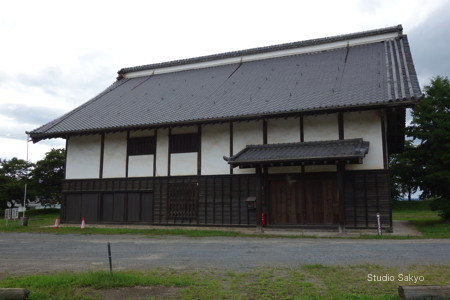
Currently, only the groups make a reservation can tour the Odaidokoro. (Apply to the Cultural Property Office of the Cultural Promotion Division of the Saku City Board of Education at least two weeks ago.)
Also, it seems to be open to individuals about twice a year. After searching, it was open to the public in November last year, but I cannot find this year’s information yet.
I will walk along the moat.
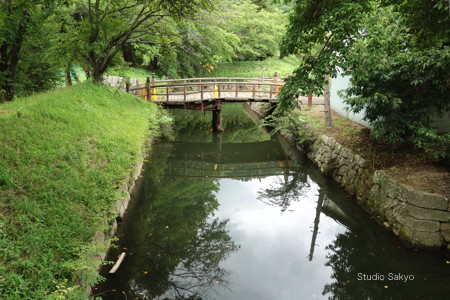
The state of the bridge is …
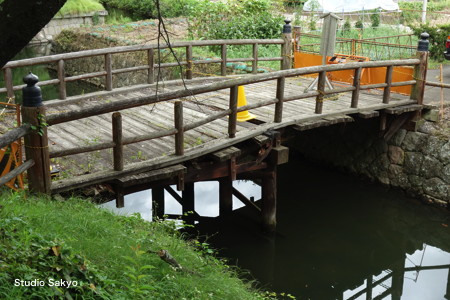
This is a bridge at the eastern gate. It cannot be crossed.
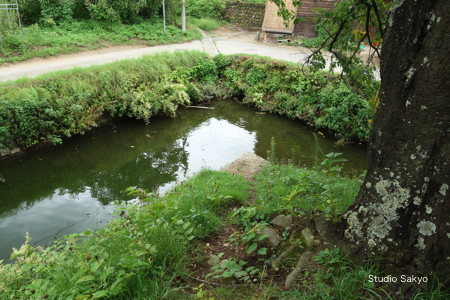
At the corner of the moat on the east side.
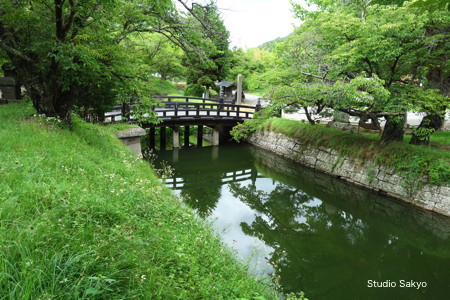
This is the Ote Bridge that I crossed first .
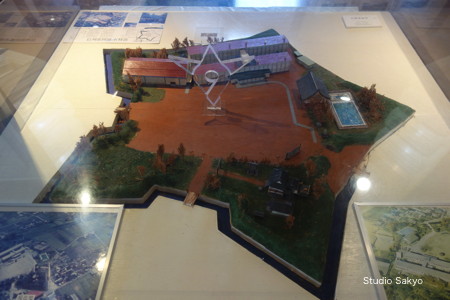
Entering the “Goryokaku Deai no Yakata". This is the model exhibited there.
Other old photographs and drawings were on display.
Norikata Matsudaira, who was the lord of the feudal clan, became the governor of the Tatsuoka domain in 1869, but he offered to abolish the domain due to financial difficulties. This year he was renamed Yuzuru Ogyu.
He then works for the government’s Decoration Bureau. He became a Viscount in 1897 and was elected a member of the House of Peers. Then he became President of the Decoration Bureau. He was a count in 1890. He served as a Privy Councilor in 1902.
However, he is more famous for contributing to the establishment of the predecessor of the Japanese Red Cross Society, “Hakuaisha".
In 1877 during the Satsuma Rebellion, Norikata Matsudaira, Tsunetami Sano, Tadaoki Sakurai and others established Hakuaisha at Kumamoto Western School. He requested the dispatch of a relief team in order to express the spirit of the Red Cross, which provides relief regardless of the enemy or ally.
Hakuaisha was renamed the Japanese Red Cross Society in 1887.
Sano is called “JRC’s father" and Ogyu is called “JRC’s mother".
————-
The topic changes.
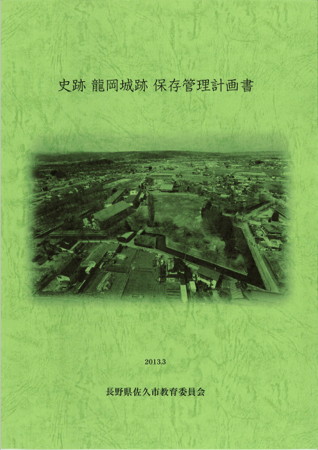
In 2013, the Saku City Board of Education issued “The preservation and management plan in Tatsuoka Castle Ruins". It is a plan to properly preserve and inherit Tatsuoka Castle as a historic site.
In it, Taguchi Elementary School is clearly stated as “an element that is not in harmony with historic sites and has low relevance" (p64).
The structures that make up the essential value of the historic site are limited to those at the time of construction, such as stone walls, moats, earthworks, ridges, and Odaidokoro. Protecting these seems to be “protecting cultural properties."
However, it’s been 151 years since the castle was built this year, and this place has been used as the school for 143 years. If we reset the accumulation of such history and make it a historic site that looks like a castle that has existed from the beginning, I would disagree.
“The school that has existed in the castle ruins for more than a hundred years." Isn’t it possible to see it as a cultural property including that? I think the school is the culture related to local life.
I understand that it is hard to treat as a cultural property the school building built around 1972, but…
In fact, it has been decided to integrate the four elementary schools in the Usuda area (January 2015, Saku City Board of Education Proposal No. 62). It is said that a school will be built in another place, so for now Taguchi Elementary School is planned to be dismantled.
However, the Agency for Cultural Affairs says that it is not good for to build a new building on a historic site. Even if Saku City can leave the existing Odaidokoro, are we happy that they will create a flat land to make it look like a normal park?
I think it’s better to use the school building without dismantling it.
We can use this place for social education, saying, “For a hundred and several decades, the castle ruins and the school have been together, and will continue to do so".
What will Saku City do from now on?
(2021.06.17) The paragraphs marked with (*) was re-modified.
(2021.06.17) The paragraphs marked with (*) was modified.
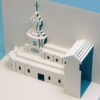
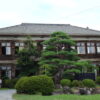
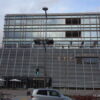
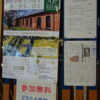
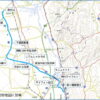
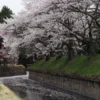
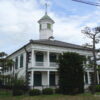
Recent Comments